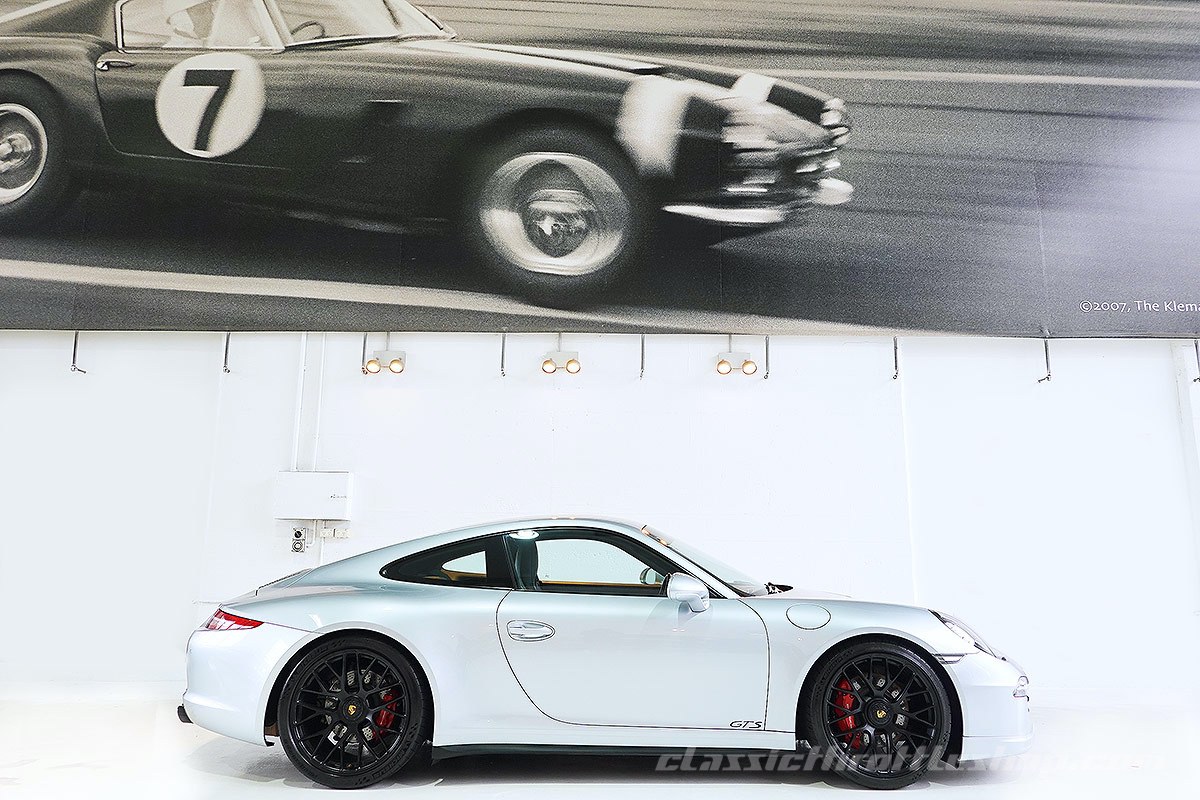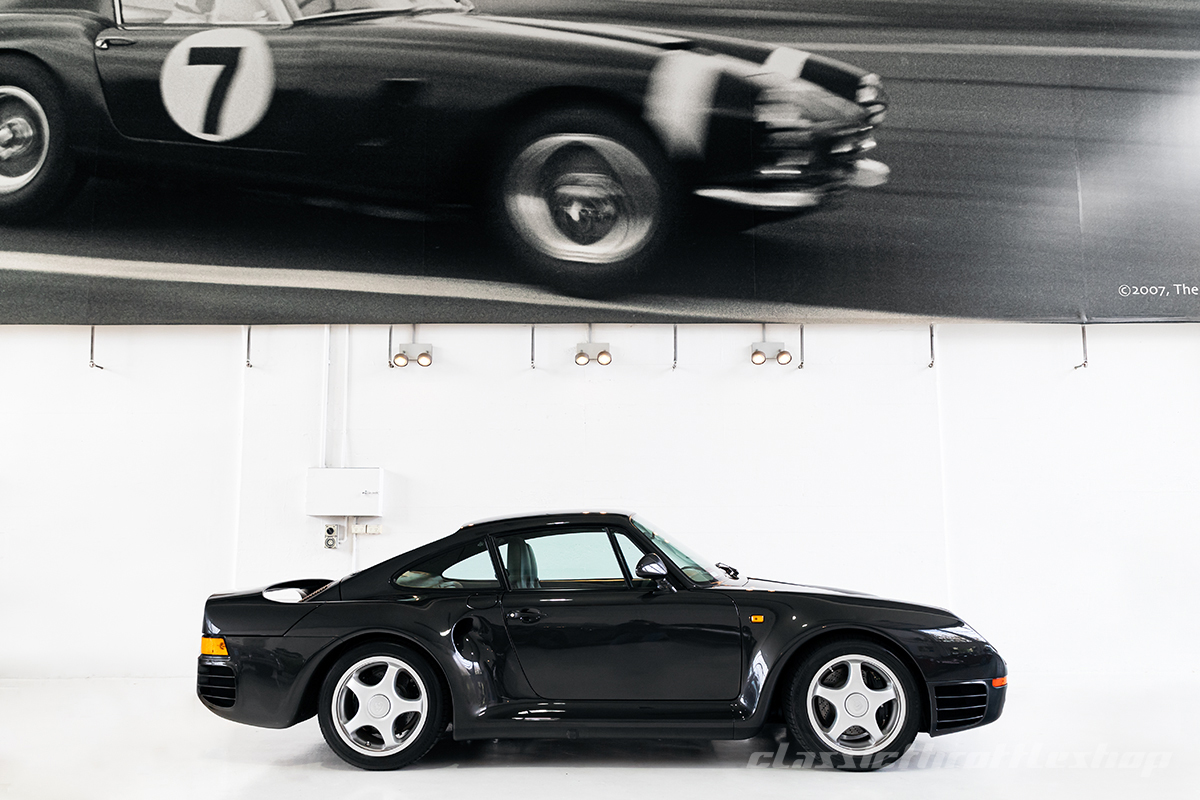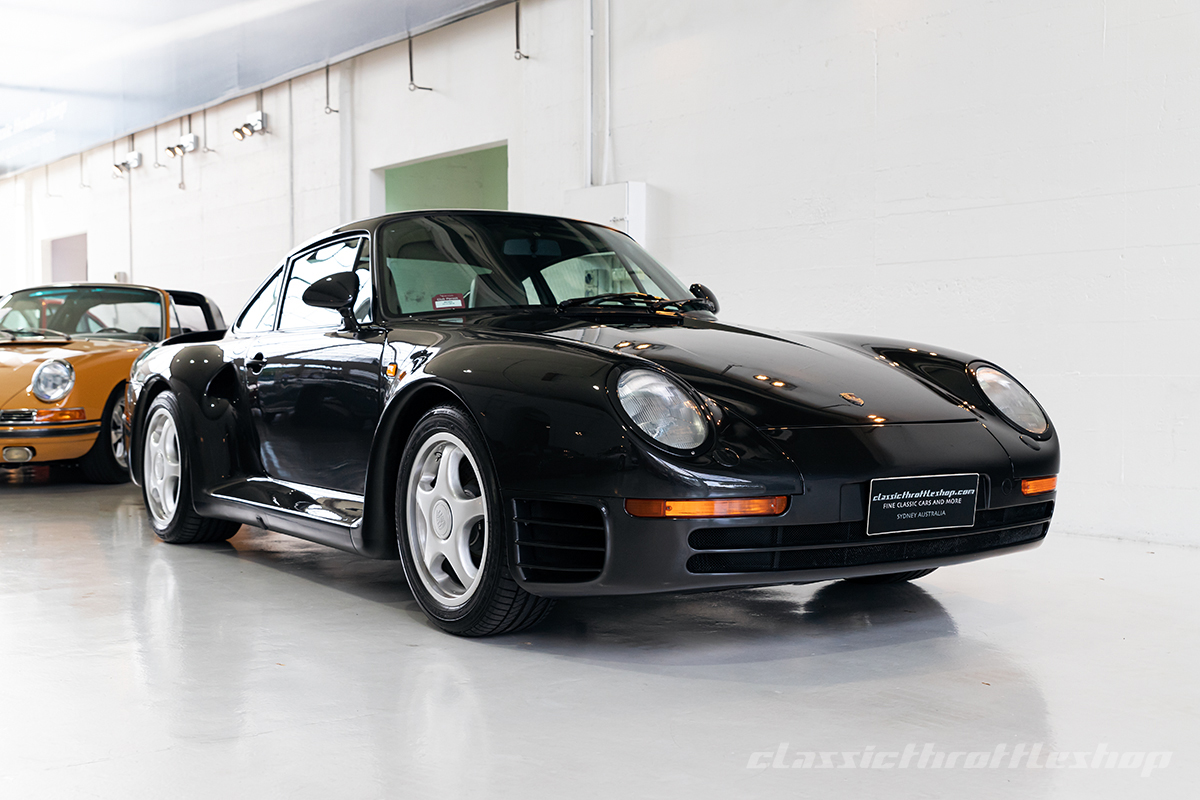
1953 Land Rover Series 1 86″
June 23, 2023
2015 Porsche 911 991.1 Carrera GTS
July 23, 2023
Graphite Metallic | Coupé | 6 Speed Manual | 2.8 litre Flat Six | 23,305 kms | POA
Porsche stunned the automotive world when it unveiled the 959 at the 1983 Frankfurt Motor Show. Identified internally as the Type 961, this new machine was to be the German automaker’s entry into the cutting-edge FIA Group B international rally championship arena, a no-holds-barred rally of the old school where practically any technology was permissible. This no-limits policy encouraged a long list of automakers to create incredibly powerful and extremely fast vehicles, all of which required production of at least 200 street-legal examples on which these rally specials could be based.
The 959’s chassis was set on the same 89.4-inch wheelbase as the 911 Carrera with the cabin’s center section, including its stamped floor plan, nearly identical to the 911. The front trunk lid and doors were aluminum; the extended nose section with almost flush headlamps was molded of polyurethane, and the remainder of the shell from fiberglass-reinforced Kevlar. There was extensive ducting and venting in the nose to cool the front brakes and oil radiator. The body’s rear section was greatly extended and widened, generously ventilated, and topped with a full-width rear wing.Powering this advanced chassis was the true brilliance of the 959. A 2.85-litre, sequential, twin-turbocharged, double overhead camshaft, flat six-cylinder engine equipped with air-cooled cylinders and 24-valve, water-cooled heads.
Special 17-inch lightweight magnesium alloy wheels and model-specific run-flat tires were created for the 959, and the wheels included one of the first automatic pressure-monitoring systems. The anti-lock braking systems featured large, ventilated discs.
Most 959s were delivered as “Komfort” models, with an array of amenities, including full leather trim and air conditioning. The 959 was an amazing performer. It could reach 100 kilometers in under four seconds, making it the fastest street-legal production car of its day. With the cancellation of Group B racing in 1986, the 959 continued as a customer road-car model, although it cost so much to build that Porsche is said to have taken a 50-percent loss on every car. By the conclusion of production in 1988, just 292 examples had been built.
This 1987 Porsche 959 Komfort was assembled in July 1987, finished in Graphite Metallic over a dark grey metallic leather. The car was equipped with an alarm system.
Delivered new on May 10th, 1988, to Porsche Italia S.P.A of Padova, it passed through two owners in Italy before being exported to the US in January 2013. It has continued to remain original and unmodified through its two American owners and it presents in virtually as new condition that belies even its limited and careful use. In 2017, the car was purchased by its current Australian owner and added to their collection with up-to-date servicing performed by Porsche Melbourne, with the most recent one done in December 2022. Offered complete with the original tool roll, jack, and jack pouch with the special 959-wheel wrench, owner’s manuals, leather wallet and stamped maintenance booklet + invoices, it is accompanied by the all-important Porsche certificate of Authenticity affirming its provenance as one of Porsche’s all-time greatest automobiles.
In total, 292 road-going customer cars were built, with most still believed to be on the road. The 959 was considered a benchmark for sports cars when Porsche stunned the world at its launch – a feeling that hasn’t changed to this day. Quite simply, the 959 remains an unrivaled driving experience.





































































